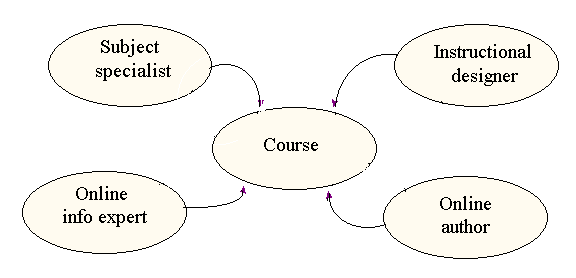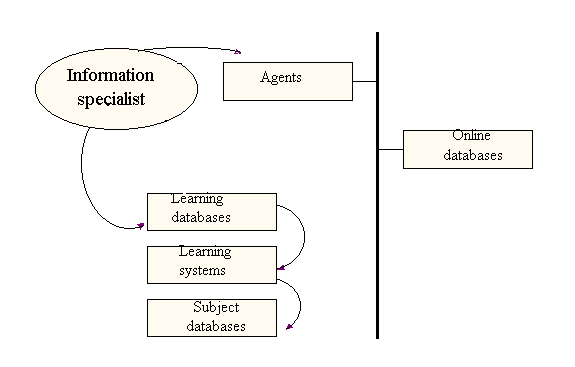Universiti Brunei Darussalam, Brunei (former Chief Executive, Open Net, Australia)
Taking a market and commercial focus, the paper describes the global changes which are occurring in education leading to a shift from old to new learning process and the development of online learning. Some key considerations in this development process are also covered.
The author was formerly the Chief Executive of Open Net, an agency established by the Federal Government of Australia to use the on-line medium in learning for the enhancement of quality. In January 1997 the initiative ended prematurely. He is now taking up a post at the University Brunei Darussalam where he will be pursuing similar approaches.
According to the futurist Joseph Pelton, speaking in December 1996, traditional universities are being replaced with cyber-universities. If existing universities do not reform quickly, they will decline into irrelevance. Paul Krugman has also commented that diminishing economic returns for academic credentials will lead to the devaluation of higher education (and a return to academia’s 19th-century rôle as a primarily social institution for the children of the wealthy) [54].
Governments are withdrawing from many things, including railways, electric power and now education. Market forces are playing a bigger rôle. Students are demanding more and behave increasingly like consumers. The overall demand for education and training services is growing faster than that in most other service industries. One prevailing idea is that education drives economies, but this is a slow process. Instead, economic and market forces will drive education. Education can no longer be seen as the right of everyone distributed arbitrarily, but as an investment in success or failure.
Peter Drucker has suggested recently that universities are dead. In Australia, government grants have fallen from 90% to 60% of total higher education funding in the years 1981 to 1993. Recent changes are accelerating this trend; law and commerce education are now operating on a cost-recovery basis. Private suppliers stepping into the vacuum include entertainment interests, such as Murdoch, Pearson, Viacom, IBM, AT&T.
The private sector is inclined to apply pressure to cut costs. There will be winners and losers as a result. Cost reduction is always difficult. A reduction in tutorial inputs is likely to form a part of the process of cost reduction. This development will coincide with the time at which the on-line medium arrives as a mass medium.
Students as customers want:
The concept that that all learning can be made fun and easy is flawed. Although it should be interesting, the task is to teach skills. Nurtured by an amusement culture from their first days of watching Sesame Street, students now are children of post-modernity, who seem implicitly to distrust anything that purports to be a source of knowledge and objectivity.
It is difficult to get away with poor quality teaching any longer. However, in the area of assessment, there is insufficient objectivity and discipline at present. There is a strong case that all assessment should be anonymous and conducted at arm’s length.
There are however a number of areas of new demand which fundamentally represent good news for those in the education sector who can ride the wave in a clever way:
Not everyone can win. Among the winners in these changing conditions are likely to be:
Among the losers:
Figure 1 summarises the characteristics of traditional learning:
|
Features |
Impact |
|
Linear/sequential |
One size fits all |
|
One to many |
Economies mainly in student/staff |
|
Minimal interaction |
Subtle learning opportunities missed |
|
Removed from ‘practice’ |
Practice confined to labs, etc. |
|
Lockstep |
Inflexible timetables |
Figure 1: Traditional Learning
Piaget has identified that, in general, people feel comfortable with a process that has not changed for 2000 years. However, there are some clear drawbacks: costs go up in proportion to revenue and it is difficult to build QA into traditional learning.
Figure 2 summarises the comparable existing or potential characteristics of new learning:
|
Features |
Impact |
|
Non sequential |
Tailored to student competence |
|
One/one, many/one |
Student/student learning |
|
Greater tutor leverage |
Improved learning economics |
|
Simulations |
Improved ‘practice’ preparation |
|
Asynchronous |
Continuous enrolment |
|
Access to contestable tutor markets |
Improved economics and quality |
Figure 2: New Learning
There is no need to abandon tutoring altogether in new learning: savings can be achieved. Extending the comparison further, figure 3 identifies some of the characteristic modes and media of old and new learning.
Some aspects of new learning, such as some kinds of simulation and group problem solving have no parallel in old learning.
|
Old |
New |
|
Lectures, books |
Books, online pages, CD-ROMs |
|
Library search |
Online search |
|
Class tests |
Online quizzes |
|
Tutorial |
Audio/visual conference
|
|
Guest lectures |
Guest chat |
Figure 3: Learning Modes and Media
Online is the perfect place to blend interaction, information, group learning, tailored learning and quality learning resources. It is inexpensive, globally contestable and there are some things which cannot be done any other way at an affordable cost. For some kinds of learning, online is unquestionably superior. It enables a larger market to be reached, but large classes are not needed. Several online groups recruit their tutors from around the world.
The following are aspects of learning which can only be achieved through online:
To illustrate this point, the language of modern biology is not print but gels and gene maps. These can be matched and manipulated online, but not in print. New forms of communication depend upon this. Colour is free online, but expensive in print. There is also some automated English essay marking taking place with considerably enhanced efficiency. The components of circuit boards can be "blown" at will in online simulations at no cost to the institution. Such simulations are free now — in future they will be sold via institutional licenses to students at low cost.
Therefore, new learning processes employ various types of tools. For the first three or four months tutors are harassed electronically, then the mode shifts to student-student communication and direct student interrogation. The academic becomes a manager of learning processes to a far greater extent.
Just as with a business, it is necessary to devise a strategy, components of which are:
It is important to move away from a not invented here attitude. Course licensing is a productive way forward, in order to move away from the situation exemplified by the existence of 32 Accounting I courses in Australia.
In devising a strategy, the following are assumptions can be made;
The following are key steps:
The following are key guidelines for the introduction and development of online learning:
Once a decision has been taken to "go all out" with online, the following are key factors in implementation:

Figure 4: Development Process
Search tools are still far from adequate. Until now, simulation has been rather engineering-oriented. The following will be important requirements in future:
The task of the information specialist is to come to terms with what the tools are going to be; that of the librarian is likely to involve taking QA-assessed online data and to incorporate it with the curriculum (see Figure 5).

Figure 5: Integration of Information with Learning
http://www.bconnex.net/~tekneck/minimax/mimaheme.html
http://www.cabs.de/demo_e/period1.html
http://www.peritas.com/bussim.html
Meta-site: http://www.towson.edu/~absel/Simpack/package.html
http://www.anu.edu.au/Forestry/fire/firecourse.html
http://www.opennet.net.au/hordenet/genobc/equations/chapter12.html
http://www.chem.uci.edu/instruction/applets/simulation.html
http://www.cs.utah.edu/~bbachman/gtutor/
http://www.pws.com/pws/math/modules/topics/deriv/graph/learn.htm
http://jw.stanford.edu/KIDS/LIBRARY/DICT/kids_dict_fruits.html
http://www.lookup.com/Homepages/96457/digsim/load.html
http://www.opennet.net.au/hordenet/genobc/exams/exam12.html
http://ccism.pc.athabascau.ca/html/quizzes/quiz1.htm
http://civil.ce.utexas.edu/prof/maidment/GISHydro/ferdi/Webedu/Webdosag/Webdosag.html
West: http://www.west.ie/
WebCT: http://homebrew.cs.ubc.ca/Webct/
IBTAuthor: http://www.ibtauthor.com/
Interactive learning: http://www.ilinc.com/
Topclass: http://www.wbtsystems.com/
Web-ai: http://home.sprynet.com/sprynet/intelli/tools.htm
[53] This account was drafted for this report by The Marc Fresko Consultancy. It is based on notes taken during the presentation and slides used by the speaker.
[54] Paul Krugman. White Collars Turn Blue . New York Times Magazine 29 Sep 96 p106.